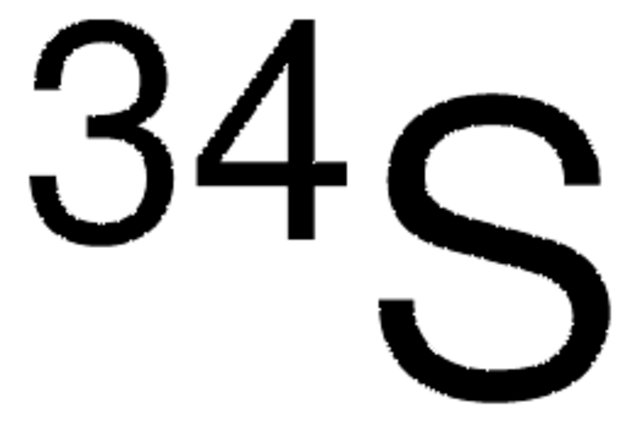IRMM643
Sulfur-32S solution
IRMM®, certified reference material, Spike Isotopic Reference Material
About This Item
Recommended Products
grade
certified reference material
Agency
IRMM®
isotopic purity
32S
manufacturer/tradename
JRC
concentration
371.96 μmol/kg±0.57 μmol/kg 32S in 2.8 M HNO3
application(s)
general analytical
format
single component solution
mass shift
depleted
SMILES string
[32S]
InChI
1S/S/i1+0
InChI key
NINIDFKCEFEMDL-IGMARMGPSA-N
Looking for similar products? Visit Product Comparison Guide
Analysis Note
IRMM643
Legal Information
Signal Word
Danger
Hazard Statements
Precautionary Statements
Hazard Classifications
Acute Tox. 4 Inhalation - Eye Dam. 1 - Met. Corr. 1 - Skin Corr. 1B
Supplementary Hazards
Storage Class Code
8A - Combustible corrosive hazardous materials
WGK
WGK 1
Regulatory Listings
Regulatory Listings are mainly provided for chemical products. Only limited information can be provided here for non-chemical products. No entry means none of the components are listed. It is the user’s obligation to ensure the safe and legal use of the product.
PDSCL
Deleterious substance
FSL
Group 6: Oxidizing liquids
Nitric acid
Hazardous rank I
ISHL Indicated Name
Substances Subject to be Indicated Names
ISHL Notified Names
Substances Subject to be Notified Names
JAN Code
IRMM643-5ML:
Choose from one of the most recent versions:
Certificates of Analysis (COA)
It looks like we've run into a problem, but you can still download Certificates of Analysis from our Documents section.
If you need assistance, please contact Customer Support.
Already Own This Product?
Find documentation for the products that you have recently purchased in the Document Library.
Our team of scientists has experience in all areas of research including Life Science, Material Science, Chemical Synthesis, Chromatography, Analytical and many others.
Contact Technical Service









